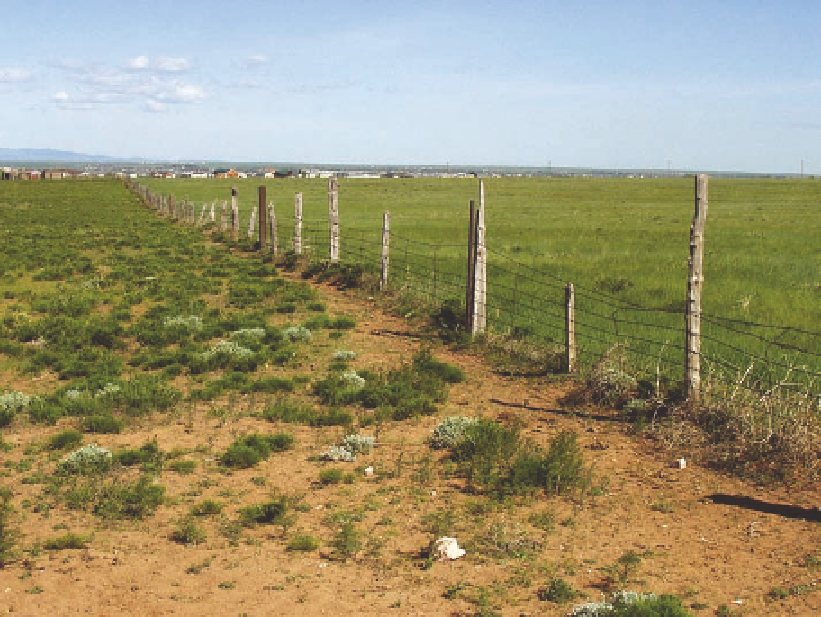Geoscience Reference
In-Depth Information
Fig. 6.15. Less-palatable plants are more likely to invade
grasslands when plants are weakened by excessive grazing,
such as to the left of this fence. Grass cover has declined and
the abundance of Douglas rabbitbrush, a native shrub, has
increased on the heavily grazed land.
anticipate that the invasive plants of the future could be
more drought tolerant.
82
invasive species often gain a foothold when distur-
bances reduce the vigor of native species. Some of these
are human caused, such as excessive grazing (fig. 6.15),
plowing, and road construction; but others are natural,
such as drought, fire, and the burrowing of small mam-
mals. A modern predicament is that even natural dis-
turbances can create habitat for undesired plants (see
chapter 16). their seeds are widely dispersed, and some-
times such plants become established before native
species can.
An increased understanding of weed ecology and the
characteristics that determine the susceptibility of some
ecosystems to invasion has led to several noteworthy
insights. First, once established, invasive plants (and
other invasive organisms) adapt further to their envi-
ronment, enabling them to become even more aggres-
sive. this could involve acclimatization as well as a
genetic response. For example, once in an environment
without parasites and pests, the invasive species may
evolve to allocate less energy to species-specific chemi-
cal defensive compounds and more energy to growth
and reproduction—an option that would not be adap-
invasive species are not nearly as abundant during the
first few years as they are later, after they have adapted
just because an introduced plant is localized does not
mean that it will remain innocuous. Similarly and on a
more positive note, some native species after a period of
time may evolve physiological and morphological adap-
tations for competing with invasive species.
85
Another insight was proposed by Agricultural Re-
search Service scientist Dana Blumenthal and his col-
most successful when slow-growing native plants were
disturbed and when native enemies of the invasives did
not exist. the first step to reduce the spread of invasive
plants, they reasoned, was to enable the persistence of
the native plants, and if possible, find a herbivore that
would feed on the invaders. it is tempting to infer that

Search WWH ::

Custom Search